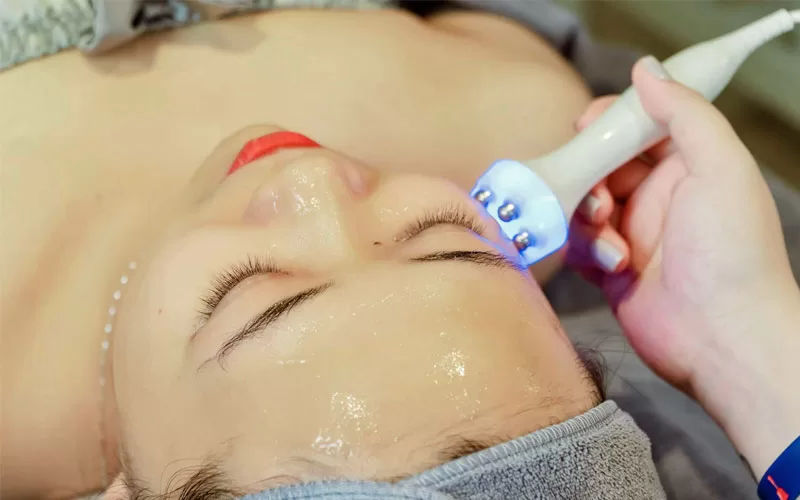
LED light therapy has gained popularity for its ability to improve skin health and appearance. Different types of LED light used in face sculptors target various skin concerns. Red light is known for its anti-aging benefits, aiming to reduce wrinkles and improve skin elasticity. Blue light targets acne-causing bacteria, helping to clear skin and reduce breakouts. Green light is used for its potential to brighten skin and even out pigmentation.
LED face sculptors often incorporate these lights to offer a comprehensive skincare routine at home. The led face sculptor device uses targeted light waves to address specific skin issues, making it a versatile tool in modern skincare. These devices work by penetrating the skin at different depths, helping improve cellular function and providing a more youthful and radiant appearance.
By understanding the specific benefits of each light type, users can tailor their skincare regimen to their needs. With consistent use, these devices offer a promising addition to daily skincare routines.
Types of LED Light Used in Face Sculptors
Face sculptors often use different types of LED light to target various skin concerns. These lights penetrate the skin at various levels, helping to improve cell function, reduce damage, and promote healthier skin. Each type of LED light has its own benefits, making it suitable for specific treatments.
Red Light Therapy
Red light therapy is popular for its ability to improve skin appearance and reduce inflammation. It penetrates deep into the skin to stimulate collagen production, which supports skin structure and reduces wrinkles. The wavelengths used often range from 620 to 750 nanometers, promoting healing and repair. This type of light also helps to improve blood circulation, which can improve skin tone and texture over time.
Blue Light Therapy
Blue light therapy is primarily used to treat acne and to kill bacteria that cause breakouts. By targeting the outermost layers of the skin, it can effectively reduce acne and prevent future breakouts. The wavelengths of blue light typically range from 415 to 450 nanometers and are gentle enough to avoid causing skin damage. This makes blue light therapy a preferred option for those with sensitive or acne-prone skin.
Green Light Therapy
Green light therapy is employed to help reduce pigmentation issues and improve skin clarity. It targets the excess melanin in the skin, which can reduce the appearance of freckles, age spots, and sun damage. With wavelengths ranging from 495 to 570 nanometers, it penetrates the skin to create an even skin tone. Greenlight also has a calming effect, making it useful for soothing irritated skin.
Amber Light Therapy
Amber light therapy is known for its soothing properties and is often used to calm irritated or sensitive skin. It operates at wavelengths between 570 and 620 nanometers, which helps to improve skin elasticity and hydration. While not as deep-penetrating as red or green light, amber light still supports circulation and skin cell repair, making it a gentle treatment option for redness and sensitivity.
Mechanisms of LED Light Therapy
LED light therapy is a non-invasive treatment that uses specific light wavelengths to target various skin issues. It focuses on collagen production, inflammation, and bacteria reduction, as well as improving skin pigmentation and tone.
Stimulation of Collagen Production
Red LED light therapy is often used to stimulate collagen production, which is key for maintaining skin elasticity and youthful appearance. Collagen is a protein that provides structure to the skin. As people age, collagen production decreases, leading to wrinkles and sagging.
Red light penetrates deeply into the skin, reaching the dermis where collagen is produced. This light is absorbed by cells in the skin, boosting their energy and promoting the synthesis of collagen. The increase in collagen helps to firm the skin and reduce fine lines and wrinkles. This makes skin look smoother and more radiant.
Reduction of Inflammation and Bacteria
Blue LED light therapy is effective for reducing inflammation and targeting bacteria on the skin’s surface, especially for acne. Blue light typically falls within the range of 415 to 450 nanometers. It directly impacts acne-causing bacteria such as Propionibacterium acnes, thereby reducing breakouts.
In addition to targeting bacteria, blue light can also help reduce inflammation. This is beneficial for calming irritated or inflamed skin, which can accompany acne or other dermatological conditions. By targeting these skin problems, LED therapy helps improve skin texture and overall complexion.
Pigmentation and Tone Improvement
Green and yellow LED lights are often used to address issues related to skin pigmentation and tone. Green light helps to lighten hyperpigmentation and even out skin tone by affecting the production of melanin. Melanin is a natural pigment in the skin, and its overproduction can lead to dark spots and uneven skin tone.
Yellow light is useful for reducing redness and improving circulation within the skin. Better circulation can lead to healthier, more vibrant skin. Together, these lights can help improve the skin’s overall appearance, making it look clearer and more uniform. Thus, LED therapy plays a significant role in achieving balanced and radiant skin.
Conclusion
LED light therapy is an innovative way to improve skin appearance. Red and blue lights are commonly used. Red light helps with deeper skin layers, promoting rejuvenation, while blue light targets the surface and helps combat acne. Understanding the role of different lights is necessary for effective use. Infrared light, for instance, penetrates even deeper and aids in healing. Knowing these details helps maximize the benefits of LED facial devices.
Choosing the right LED color based on skin needs is important. Following the recommended guidelines guarantees safety and effectiveness. If used properly, these devices can complement skincare routines and support healthy skin.
Leave a Reply